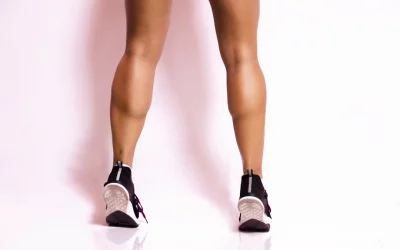Dealing with sacroiliac (SI) joint pain can be frustrating. It can impact every little movement made in your daily life, bringing you nothing but pain and discomfort. Luckily there’s a simple and effective way to find relief – stretching. But not all stretches work the same, and doing them wrong might not help—or could even make it worse.
In this article, we’ll look into stretches that specifically target the area where the SI joint is located in order to relieve pain and maintain mobility.
What Is The Sacroiliac (SI) Joint?
The sacroiliac (SI) joint connects two important parts of your body: the sacrum, which is the triangular bone at the base of your spine, and the ilium, which is part of your pelvis. This joint plays a key role in how your body moves and functions.
One of the SI joint’s main functions is to transfer weight between your upper body and your legs. Every time you walk, run, or even stand, the SI joint helps distribute the force, making sure that the load is shared between your spine and your legs.
Despite its involvement in weight-bearing, the SI joint allows only minimal movement. Its primary job is to provide stability instead of flexibility. By doing this, it helps absorb shock between your spine and pelvis, which protects your body from excessive stress during activities like walking or lifting.
Effective SI Joint Stretch Techniques
1. Figure-Four Stretch (Piriformis Stretch)
The figure-four stretch, also known as the piriformis stretch, can be highly effective for improving SI joint mobility and reducing pain. By targeting the piriformis muscle, which is located deep in the buttock, this stretch helps alleviate tension in the lower back and hips. Since tightness in the piriformis can affect the alignment of the SI joint, loosening this muscle can relieve pressure and discomfort in the area.
In its supine version, the figure-four stretch is performed while lying on your back, allowing you to isolate the piriformis and gently stretch it, which helps to reduce SI joint pain. To do this stretch:
-
Lie on your back with your knees bent and feet flat on the floor.
-
Place your right ankle over your left thigh, just above the knee, to form a “figure-four” shape.
-
Lift your left leg off the floor, bringing your knee toward your chest. Use your hands to hold the back of your left thigh.
-
Gently pull your thigh closer to your body for a deeper stretch, feeling the stretch in your right hip and glute.
-
Hold for up to 30 seconds, breathing deeply, then switch sides. Alternatively, you can try holding the stretch for 10 seconds and repeating it three times—this cumulative hold time provides the same benefits and may be a safer option for beginners. This helps the muscles around the joint relax, easing SI joint stiffness and inflammation.
A seated variation of the figure-four stretch offers another way to improve hip mobility. By sitting upright and crossing your ankle over the opposite knee, you can achieve a similar stretch that also targets the external hip rotators. This version can be useful for people who prefer to stretch while seated or have limited mobility.
This stretch is also beneficial for those experiencing radiating pain down the leg. Tight piriformis muscles can irritate the sciatic nerve, leading to pain that travels from the lower back to the foot. By loosening these muscles, the figure-four stretch might help reduce nerve compression and relieve this type of discomfort.
2. Cat-Cow Stretch
The Cat-Cow stretch is a gentle movement that alternates between spinal flexion (Cat) and spinal extension (Cow). This back-and-forth motion encourages mobility in your lower back and sacroiliac (SI) joint, helping to reduce stiffness. Flexion stretches your spine upward, while extension lowers it, creating a rhythm that promotes flexibility in the SI joint area.
To perform the Cat-Cow stretch:
-
Start on All Fours: Begin in a tabletop position, with wrists directly under your shoulders and knees under your hips. Keep your spine neutral and gaze down.
-
Move into Cat Pose: Exhale as you round your spine upward, drawing your belly button toward your spine. Tuck your chin and let your head drop, focusing on stretching the back.
-
Transition to Cow Pose: Inhale and arch your back, allowing your belly to drop. Lift your chest and gaze slightly upward, letting your head follow the natural curve of your spine. Tip your tailbone up, creating a gentle spinal curve.
-
Flow Between Cat and Cow: Continue to alternate between Cat (exhaling and rounding the spine) and Cow (inhaling and arching the spine) for 5–10 rounds, moving smoothly with each breath.
-
Finish in Neutral: After your final round, return to the tabletop position with a neutral spine.
To further support SI joint alignment, focus on engaging your core during the movement. Tightening your abdominal muscles helps stabilize the pelvis, which can relieve pain by maintaining proper joint positioning. This is particularly helpful if you’re dealing with misalignment or instability in the SI joint.
In addition to easing discomfort, the Cat-Cow stretch can improve overall flexibility in the lower back and pelvis. Greater flexibility means less stiffness, which can improve your range of motion and further aid in pain relief.
3. Cobra Pose
Cobra Pose is a gentle back extension that can be beneficial for relieving tension in the lower back and pelvis, areas indirectly connected to the SI joint. By extending your back, you stretch the muscles and tissues in these regions, helping to reduce tension that might contribute to SI joint discomfort. The amount of impact on the SI joint may vary based on individual flexibility and pelvic stability.
To perform Cobra Pose, begin by lying face down with your legs extended behind you and your feet hip-width apart, with the tops of your feet resting on the floor. Position your hands under your shoulders, keeping your elbows close to your body, and spread your fingers wide for support. Engage your legs by pressing the tops of your feet into the floor and lightly squeezing your thighs; this activation protects the lower back.
As you inhale, lift your chest off the ground, pressing through your palms and gently straightening your arms while keeping a slight bend in your elbows. This soft bend prevents strain on the lower back. Draw your shoulders back and away from your ears to open the chest, and focus on lengthening your spine rather than pushing too high. The backbend should originate from the upper back rather than the lower back. To help reduce lower back and SI joint pressure, lightly engage your core muscles.
This pose also encourages a mild anterior pelvic tilt, which can potentially improve mobility around the SI joint. Increased mobility may help reduce stiffness and discomfort, allowing the joint to function more smoothly.
Hold this position for up to 30 seconds (or 3×10 seconds alternatively), breathing deeply and using each inhale to lift your chest slightly while maintaining length in the spine. Then, exhale and slowly lower your chest back to the ground, bringing your hands back to your sides and resting with your forehead on the mat. Take a few breaths to relax before repeating the pose 2-3 times if desired.
Beyond its benefits for the lower back and pelvis, Cobra Pose also helps open up your chest, which can improve posture and spinal alignment—both important for reducing strain on the SI joint. When your spine is aligned properly, pressure on the SI joint is more evenly distributed, further easing any pain or discomfort.
4. Bridge Pose
Bridge Pose is a beneficial stretch for those experiencing SI joint pain because it strengthens key muscles and promotes better alignment. The glute muscles are activated when you perform the pose. This action helps stabilize the area around the SI joint, providing essential support and reducing the risk of pain or discomfort in that region.
At the same time, Bridge Pose offers a gentle stretch for your hamstrings. This can relieve tension in the pelvis, which is closely connected to the SI joint. By loosening tight hamstrings, you reduce the strain on the joint, which can contribute to pain relief over time.
Another benefit of the Bridge Pose is that it encourages you to engage your core muscles. This support from your core helps stabilize your lower back and improves the overall alignment of your spine and pelvis. As a result, it can reduce pressure on the SI joint and alleviate discomfort.
To perform Bridge Pose, lie on your back with your knees bent and feet flat on the floor, hip-width apart, with your arms by your sides and palms facing down. Press your feet into the ground and slowly lift your hips toward the ceiling, squeezing your glutes and engaging your core as you raise your hips.
Hold this position for up to 30 seconds (3×10 seconds alternatively), then gently lower your hips back to the floor. Repeat this movement a few times to build strength and flexibility around the SI joint.
5. Low Lunge Hip Flexor Stretch
The Low Lunge Hip Flexor Stretch is a powerful way to help relieve SI joint pain by loosening the hip flexor muscles, particularly the psoas and iliacus. These muscles often become tight from prolonged sitting or repetitive movements, which can place extra pressure on the sacroiliac joint, leading to discomfort.
To perform the stretch, begin in a kneeling position on the floor. Step your right foot forward, planting it firmly so your right knee is directly above your right ankle, with your leg forming a 90-degree angle. Extend your left leg behind you, keeping the knee on the ground for support, and either point the toes or tuck them under if that feels more stable.
By stretching the psoas and iliacus in this lunge position, you can reduce tension and improve mobility in the hip area. As these muscles release, it can help ease pressure on the lower back and SI joint, creating a more balanced and functional posture.
To make the stretch effective, focus on proper pelvic alignment. Tilt your pelvis slightly forward by engaging your core and tucking your tailbone under, which will help keep the stretch focused on your hip flexors instead of shifting strain to the lower back. Then, gently shift your weight forward until you feel a stretch along the front of your left hip and thigh. Hold this position, breathing deeply, and aim to stay in the stretch for up to 30 seconds.
Additionally, the positioning of the knee is critical. Keeping your front knee directly above the ankle ensures a stable base, preventing extra strain on the hips and keeping the stretch balanced. Place your hands on your right thigh or hips for support, and, after holding the stretch, gently release and switch sides by bringing your left foot forward and extending your right leg behind you.
By utilizing the stretches mentioned in this article, you can effectively relieve tension and pain originating from your SI joint. But as important as knowing the effective stretching techniques is, consistency is key for achieving true long-term benefits. You can use stretching apps like WeStretch to help track your progress and get closer to these goals.
 Exercise Smarter with WeStretch: Your All-in-One Stretching Assistant
Exercise Smarter with WeStretch: Your All-in-One Stretching Assistant
A consistent full-body stretching routine is essential for improving flexibility, supporting injury prevention, and enhancing overall well-being. Carefully following simple yet effective stretches targeting the hamstrings, hip flexors, back, quads, chest, and shoulders, individuals of any fitness level can reap the benefits.
Regular stretching, with attention to proper form and consistency, can help you move more freely, recover faster, and feel better in everyday activities.
Looking for a way to add some fun to your stretching routine? Check out WeStretch—an app that’s like your own personal stretch coach! With tailored plans, easy-to-follow demos, and progress tracking, it’s got everything you need to keep you limber and on point. Ready to get flexible? Sign up today and let’s get stretching!
FAQ
How to release a tight SI joint?
To release a tight SI joint, try gentle stretches like the knee-to-chest stretch, figure-four stretch, or the seated spinal twist. These movements help improve flexibility and reduce tension around the sacroiliac joint. Always perform stretches slowly and hold each position for up to 30 seconds, focusing on deep breathing. Consistency and proper form are key to relieving pain effectively.
Is stretching good for SI joint pain?
Yes, stretching can be beneficial for SI joint pain. Gentle, targeted stretches help improve mobility, reduce tension, and alleviate discomfort by focusing on muscles surrounding the SI joint, such as the lower back, hips, and glutes. Incorporating stretches like knee-to-chest, hip flexor stretches, and spinal twists into your routine can promote flexibility and improve joint stability, providing effective pain relief.
How do I reset my SI joint myself?
To reset your SI joint, try gentle stretches like the knee-to-chest stretch, figure-four stretch, or pelvic tilts. Lie on your back and pull one or both knees toward your chest, hold for up to 30 seconds, and repeat.
For the figure-four, cross one ankle over the opposite knee and gently pull the legs toward your chest. Pelvic tilts involve lying on your back, tightening your core, and gently tilting your pelvis upward. Always perform these movements slowly and stop if you feel discomfort.
How can I relieve pain in my SI joint?
To relieve pain in your SI joint, gentle stretching techniques can help realign the joint and relieve discomfort. Try knee-to-chest stretches, hip rotations, and seated spinal twists. Always move slowly and avoid pushing through pain. Strengthening exercises for the core and lower back might also stabilize the SI joint over time. If the pain persists, consult a healthcare professional for personalized advice.
What are some simple SI joint stretches for beginners?
Some simple SI joint stretches for beginners include the knee-to-chest stretch, where you lie on your back and pull one knee toward your chest, and the figure-four stretch, where you cross one ankle over the opposite knee and gently pull the lower leg towards you. The cat-cow stretch, performed on hands and knees, can also help by gently mobilizing the spine and pelvis. Always move slowly and avoid overstretching to prevent further discomfort.






